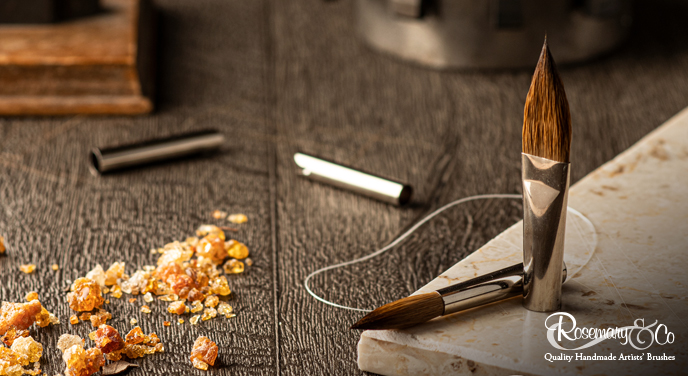icture frames aren't just about holding your artwork or photographs; they're a crucial element in showcasing and enhancing your cherished memories and favorite pieces. Choosing the right picture frame can make a significant difference in ...
Acrylic vs glass including conservation glass, museum glass, and art glass
Pros and cons of different glazing options

Choosing the right glazing options for your framed artwork can be confusing. The choice of glazing is a critical aspect of picture framing, as it not only enhances the visual appeal but also protects the artwork from potential damage. In this article, we will explore the pros and cons of acrylic glazing and various types of glass, including conservation glass, museum glass, and art glass.
Introduction
Glazing refers to the protective covering placed over artwork within a picture frame. It serves as a barrier against dust, moisture, and UV radiation, ensuring the longevity and preservation of the artwork. There are two primary options for glazing: acrylic glazing and glass glazing. Each option has its own advantages and disadvantages, and understanding them will help you make an informed decision when selecting the right glazing for your framed pieces.
Importance of Glazing in Picture Framing
Glazing is an essential component of picture framing for several reasons. Firstly, it protects the artwork from physical damage caused by dust, fingerprints, and other environmental factors. Secondly, it acts as a barrier against moisture, preventing the growth of mold or mildew that could harm the artwork. Lastly, and perhaps most importantly, glazing helps to minimize the harmful effects of UV radiation, which can cause fading and deterioration of colours over time.
Acrylic Glazing
Acrylic glazing, also known as plexiglass or acrylic glass, is a popular choice in the picture framing industry due to its versatility and durability. It is a lightweight and shatter-resistant material, making it a safer option for framing delicate or valuable artwork.
Pros of Acrylic Glazing
Lightweight and shatter-resistant: Acrylic glazing is lighter and less likely to break than traditional glass, reducing the risk of damage during handling or transportation.
UV protection: Many acrylic glazing options offer excellent UV protection, safeguarding the artwork from harmful rays that can cause fading or discoloration.
Clarity and transparency: High-quality acrylic glazing can provide exceptional clarity and transparency, allowing the artwork to be viewed without distortion.
Less reflective: Acrylic glazing has a lower reflective index compared to glass, minimizing glare and ensuring better visibility of the artwork.
Cons of Acrylic Glazing
Prone to scratching: Acrylic glazing is more susceptible to scratching than glass.
Therefore, extra care must be taken during cleaning and handling to avoid damaging the surface.
Potential static charge: Acrylic glazing can accumulate a static charge, attracting dust particles more easily. Regular cleaning is necessary to maintain its pristine appearance.
Susceptible to chemical damage: Acrylic glazing can be damaged by certain chemicals, so it is important to use appropriate cleaning solutions and avoid contact with harsh substances.
Glass Glazing
Glass glazing has long been a traditional choice for framing artwork. It offers a classic and timeless aesthetic appeal and comes in various options, including conservation glass, museum glass, and art glass.
Conservation Glass
Conservation glass is specifically designed to provide optimum protection against UV radiation. It effectively blocks out up to 99% of harmful UV rays, preserving the colors and integrity of the artwork for extended periods.
Museum Glass
Museum glass takes preservation to the next level. It not only offers superior UV protection but also provides anti-reflective properties. This type of glass minimizes glare and maximizes clarity, allowing the viewer to appreciate the artwork with minimal distractions.
Art Glass
Art glass, as the name suggests, is a premium glazing option that enhances the visual impact of the artwork. It combines the qualities of conservation glass and museum glass, offering exceptional UV protection and anti-reflective properties. Additionally, art glass has an added feature of enhanced color transmission, bringing out the vibrant details and hues of the artwork.
Pros and Cons of Glass Glazing
Pros: Glass glazing provides a high level of clarity, durability, and a classic aesthetic appeal. It offers excellent UV protection, especially conservation glass and museum glass.
Cons: Glass glazing is heavier and more fragile than acrylic, making it slightly more challenging to handle and transport. The reflective surface of glass can also cause glare and reflections, hindering the visibility of the artwork.
Conclusion
Conclusion
When it comes to choosing the right glazing for your framed artwork, you need to consider various factors, including the level of protection required, aesthetic preferences, and practical considerations. Acrylic glazing is a lightweight and shatter-resistant option with good UV protection, while glass glazing provides excellent clarity and a classic look. Conservation glass, museum glass, and art glass offer superior UV protection and anti-reflective properties.
In the end, the choice between acrylic glazing and glass glazing depends on your specific needs and preferences. Whether you prioritize durability, UV protection, or visual aesthetics, understanding the pros and cons of each option will guide you towards making an informed decision that best suits your artwork and display environment.
"Bring your vision to life with our professional PDR Custom Framing services.
Unique Facts:
Unique Facts:
Acrylic glazing is a lightweight and shatter-resistant alternative to traditional glass glazing.
Both acrylic glazing and glass glazing offer UV protection to safeguard artwork from fading and discoloration.
Conservation glass, museum glass, and art glass provide varying levels of UV protection and anti-reflective properties.
Acrylic glazing is prone to scratching and static charge, requiring careful handling and regular cleaning.
Glass glazing offers a classic aesthetic appeal but can be heavier and more reflective than acrylic glazing.
Leave a Comment 👋
Leave a Comment 👋

How to Hang Picture Frames and Art Professionally
A short guide how to hang picture frames and art professionally that will eliminate all confusion.



